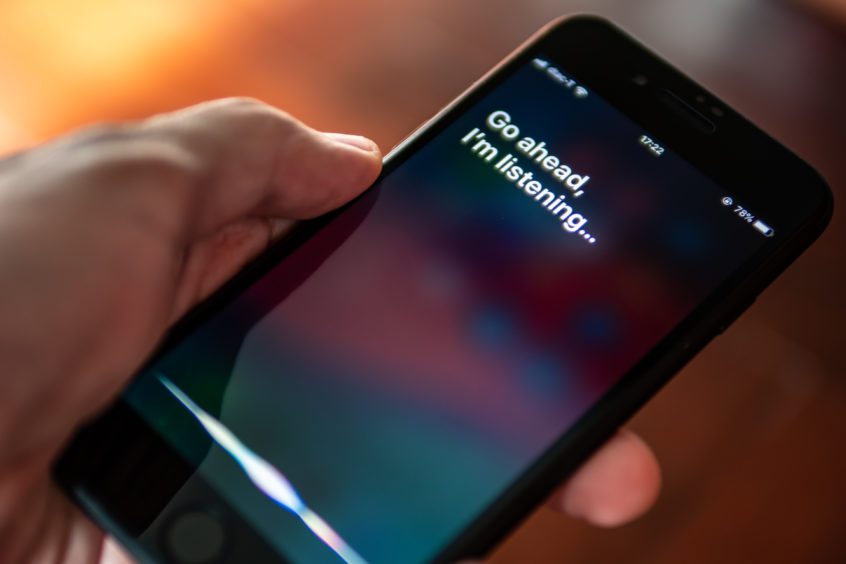You’ve probably heard the saying, “There’s an app for that.” And if you have hearing loss, that’s definitely true. Here are five hearing-related apps you might want to look into. All are free and may be helpful, and our own Dave Nissen, Au.D., Senior Audiologist, checked them all out. Here’s more information:
- Otter Voice Meeting Notes—This free app, available on iOS, Android, and the web, records audio and converts speech to text on the fly using voice recognition algorithms. It also synchronizes the audio with the text during playback, so you can tap on any word to hear exactly what was being said at the time. While Otter’s algorithms don’t produce perfect transcriptions, it’s pretty accurate.
The Associated Audiologists team recommends this app, which can be especially helpful when someone is having a difficult time hearing, or when someone is wearing a mask.
- SoundPrint—iOS and Android devices—One of the biggest challenges for many individuals who have hearing loss and wear hearing aids is hearing in public spaces, like crowded restaurants.
SoundPrint crowd sources noise level data to help people find quiet places to eat, drink and socialize. You can use the app’s “SoundCheck” feature to record the ambient noise of a bar, restaurant or other public space through your smartphone’s built-in microphone. Once the location’s decibel level is determined, the data is submitted and stored in the app’s database. When you search for a spot through the app, you can see if it’s “quiet,” “moderate,” “loud” or “very loud,” and make your choice accordingly.
Dr. Nissen says: Has a geo-located list of restaurants, bars, etc., and the associated noise levels as submitted by customers. The SoundCheck feature only works for iOS devices. Android has too many variables with all the different manufacturers and models. The user can only submit a subjective assessment of four choices.
- ClearCaptions Mobile—iOS only—ClearCaptions is an FCC-certified service made possible through a federally funded program at no cost to the user. This mobile version of the in-home phone captioning service is for individuals with hearing loss. It can be used wherever you go, captioning mobile calls so you don’t miss a word. The app provides captions for incoming and outgoing calls, plus supports 3-way calling, and free voicemail with captions.
- Tunity—iOS and Android devices—Listening to the TV also can be a challenge for anyone who wears hearing aids. Tunity allows you to stream audio from live TV programming. However, it doesn’t support online content, like YouTube or streaming services. To connect, you simply scan the TV with the app’s camera to identify the channel and exact timing of what you’re watching. It then streams the synchronized audio to your headphones or Bluetooth speaker. Plus, thanks to machine learning, channels you, or anyone else has listened to, are automatically saved so you can listen again simply by choosing the channel from the Quick Tune list—no need to re-scan the TV. It can be used anywhere there are muted TVs—home, restaurants, gyms, airports, hotels, etc.
Dr. Nissen says: This app has been around a while and has a good following of users.
- NIOSH Sound Level Meter—iOS only—Have you ever wondered how loud the environment you’re in is? This app can help you monitor noise exposure. Experts from the Centers for Disease Control’s National Institute for Occupational Safety and Health (NIOSH) developed this simple sound-measuring tool to promote hearing safety in the workplace, but it’s useful for assessing noise in any setting. The app uses your smartphone’s built-in microphone to give you highly accurate, real-time noise exposure data, which you can then save and share with others. The app also offers guidelines for properly conducting a noise measurement, as well as tips to protect hearing.
- Decibel X—iOS and Android devices—This is another great app for monitoring noise exposure.
Similar to the NIOSH Sound Level Meter, Decibel X lets you easily and accurately measure sounds ranging from 30 dBA (the equivalent of a whisper) to 130 dBA (a power drill). Plus, the app is compatible with the Apple Watch, so you can record sounds right from your wrist.
Dr. Nissen says: This app isn’t very accurate. I compared my phone’s measurements to the sound field in our booth. It was off by 20 to 25 dB, indicating less loudness than was being presented.
In addition to these apps, if you wear hearing aids and have more advanced technology, be sure to download the app for your specific device. These apps can do everything from alert you to when your batteries are running low, to give you control of directional microphones and Bluetooth connectivity.
The doctoral-level audiologists with Associated Audiologists are experts in hearing aid technology and the latest advances. Schedule an appointment.



